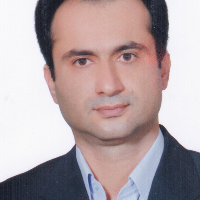Classification of bio-pollution caused by Mnemiopsis leidyi on habitat traits of the southern of Caspian Sea
Author(s):
Abstract:
Introduction
Since 1980s, the Mnemiopsis leidyi (M. leidyi) was affected on the Black Sea ecosystems. This invasive species has a negative impact on many fish biomass of the Black Sea due to competition feeding on edible zooplankton and fish eggs and larvae of Anchovies. At the same time, the possibility of arriving was estimated into the sensitive ecosystems such as the Caspian Sea. Then this species was observed in the Caspian Sea during November in 1999. In the Black Sea, some details of impact of M. leidyi on communities, habitats and ecosystems and ultimately "biological pollution levels (Bio-Pollution Level, BPL) during arrival, establishment, expansion and adjustment process from1980 to 2000 were studies. In this assessment, impact of invasive species on communities, habitats and ecosystems were classified into five groups (no effect, weak, moderate, strong and extreme).In recent years, M. leidyi was causing problems such as reducing the amount of zooplankton, an increase nutrients at water column and snow bed (Eutrophication). However no quantitative estimation has been done for ranking the impact in the Iranian basin of Caspian Sea. Therefore, this study conducted to evaluate the impact of M. leidyi on habitat in term of environment parameters. Material and Methods
In this research, data of physic-chemical parameters (as habitat straits) from 1996 to 2011were applied. These years were classified into two group: before introduction of ctenophore (1996-2000) and after introduction of ctenophore (2001-2011) and also these two periods were grouped into three assessment periods which included the years of 1996-2000, 2008-2011 and 2008-11, respectively. In this study, the years before the introduction of ctenophore considered as a un-disturb ecosystem and the data for these years used as reference data (Reference Value). Also the maximum studied depth was 20 meter; it is because of the high density of ctenophore which was recorded up to 20 m depth. A variety of habitat modification activities of alien species may be ranked from no noticeable alterations in benthic or pelagic environment up to massive impacts causing irreversible changes which classified into five groups: no habitat alteration (H0), alteration of a habitat(s) but no reduction of spatial extent of a habitat(s) (H1), alteration and reduction of spatial extent of a habitat(s) (H2), alteration of a key habitat, severe reduction of spatial extent of habitat(s); loss of habitat(s) within a small area of the assessment unit (H3) and loss of habitats in most or the entire assessment unit, loss of a key habitat. Results And Discussion
Since the late 1960s, like many marine environments, increasing anthropogenic activities has been a major cause of instability and disturbed in the Caspian Sea environment, therefore, the M. leidyi restructured not only increase its distribution in the Caspian Sea but also it sometimes will have high abundance. The present paper was conducted to changes habitat of the Caspian Sea, namely in terms of physicochemical parameters and nutrient in the south Caspian Sea region of Iran coastal which examined quantitative (numerical). Environment parameters showed obvious changes after introduction of M. leidyi to the references value (years before introduction into the Caspian Sea). As the statistical analyses showed the significant difference among mean values of physico-chemical parameters (p<0/05) during 3 defined periods. Meanwhile in T-test, significant difference of parameters observed between before/after introduction of M. leidyi into the Caspian Sea. The excretion of nutrients and secretion of mucus by M. leidyi should be increase the nutrient content of Caspian Sea, as well as river discharge and bottom turbulence. However, the nutrient content (except organic nitrogen) showed decreasing trend from 2008-2011. It was due to consumption of the nutrient by massive phytoplankton reproduction in the years. High abundance of primary producer and photocentetic organisms increased the water oxygen dissolved and carbon dioxide. However, pH of water didn’t change significantly due to high buffered water of Caspian Sea. Large part of excretion material by M. leidyi contained of dissolved organic carbon and nitrogen and a little part is from organic phosphorus. Meanwhile, rate of phosphorus turnover is faster than carbon and nitrogen elements. So as it expected inorganic phosphorus decreased and organic nitrogen increased from 1998 to 2011. M. leidyi effect on quality both water and sediment and changes the habitats. Meanwhile, these two habitats (water and sediment) have mutal effect. It expected levels of organic matter was increased in the bed with a bed of snow (create mucus from M. leidyi). Although, that information related to the percent of the total organic matter was not completed and there is a lack of information especially in the early years of the second period (the years 2001 and 2002), but its percentage increase since 1998 (the first period) to the year 2003 (second period). Although, compared to the year 2003 showed a decline but the data is not substantially decreasing the reference values. In fact, slope of trendlines showed slowly changes of each parameter in figures, but comparative values of the environmental parameters changes more clearly than in the year before introduction of M. leidyi (Reference value). Impact on habitats and ecosystem process became evident at later stages of an invasion. As the results showed that even at the presence and bloom of ctenophore the impact on habitat classified in H0 during 2001-02. Evidences of impact on habitat increased by years and shifted to the ranks H2, H3 and finally H4 during 2005-06. Even in this period, biomass of big eyes and anchovies fishes severely destroyed. In the adaptation phase (2008-2010) habitat changes classified on H2 to H3 according to the decreasing of ctenophore density. Evaluation of South-Eastern and Eastern regions of the Caspian Sea indicated that this part of the sea based on habitatsا features was ranked H0-H4 in 2004, and the effects of M. leidyi was multiple levels and it was the expression of biological contamination less than 4 and nearly brought on stage was "adaptation. Similar condition showed that the stage adaptation of the Black Sea in 2000, about 20 years after the introduction of the M. leidyi in the Black Sea occurred. Also, because of differences between the Black Sea and the Caspian Sea are such strong predatory Beroe ovate feeding M. leidyi a significant decrease since 1997 in the Black Sea, the abundance of M. leidyi was reached the maximum level in the Caspian Sea until 2002. The maximum level of M. leidyi was registered about 7 years after the first observation of invasive comb jelly in the Black Sea, while this condition was happened about 3 years after first introduction of M. leidyi in the Caspian Sea. Some studies showed that the maximum rate of invasive M. leidyi in the Black Sea in 1989 coincided with the expansion of the fourth level of pollution or habitat (H4), respectively. The fourth level of pollution (H4) in the Caspian Sea in 1385 was calculated about four years after the expansion of the M. leidyi (in 1380 and 1381). Shorter time to reach various stages of habitat pollutions and the biological contamination level (BPL) in the Caspian Sea compared to the Black Sea, indicates that the Caspian ecosystem is very fragile due to its semi-enclosed compared to the Black Sea which connected to open Seas. Conclusion
There are some evidences such as increases of eutrophic level (from oligotrophy to meso-eutrophy), increases of dissolved oxygen, algal bloom, increases/decrease of Shannon diversity index in phytoplankton/zooplankton and increase of sediment-feeders of macro-benthos in different years of third period of study (2007-10) that indicating to stress and disturbance in Caspian Sea environment. The engineering of these events was mainly by M. leidyi. In Caspian Sea, maximum abundance of M. leidyi observes in 2001-2 (about 3 years after the introduction of the invader) and class H4 calculated for years of 2005-6 (approximately 4 years after M. leidyi blooming in 2001-2. While in the Black Sea, the maximum abundance of M. leidyi and class H4 of the impact happened 7 years after arrival of the invader in to the ecosystem. It seems that the semi-closed system of the Caspian Sea is more sensitive than Black Sea. Finally, there are others factors of impacts including an increase of sea level, river flows fluctuation, oil and gas production, chemical pollution, eutrophication, others biological invasion, diseases, natural tectonic activity and climate changes on habitats and ecosystem of Caspian Sea. These factors have overlap with the biological invasion of M. leidyi. Therefore the scaling of these factors and determination of their weights in impact process is key tasks of a regional habitat protection of the Caspian Sea.Keywords:
Language:
Persian
Published:
Journal of Environmental Studies, Volume:41 Issue: 1, 2015
Pages:
219 to 232
magiran.com/p1415206
دانلود و مطالعه متن این مقاله با یکی از روشهای زیر امکان پذیر است:
اشتراک شخصی
با عضویت و پرداخت آنلاین حق اشتراک یکساله به مبلغ 1,390,000ريال میتوانید 70 عنوان مطلب دانلود کنید!
اشتراک سازمانی
به کتابخانه دانشگاه یا محل کار خود پیشنهاد کنید تا اشتراک سازمانی این پایگاه را برای دسترسی نامحدود همه کاربران به متن مطالب تهیه نمایند!
توجه!
- حق عضویت دریافتی صرف حمایت از نشریات عضو و نگهداری، تکمیل و توسعه مگیران میشود.
- پرداخت حق اشتراک و دانلود مقالات اجازه بازنشر آن در سایر رسانههای چاپی و دیجیتال را به کاربر نمیدهد.
دسترسی سراسری کاربران دانشگاه پیام نور!
اعضای هیئت علمی و دانشجویان دانشگاه پیام نور در سراسر کشور، در صورت ثبت نام با ایمیل دانشگاهی، تا پایان فروردین ماه 1403 به مقالات سایت دسترسی خواهند داشت!
In order to view content subscription is required
Personal subscription
Subscribe magiran.com for 70 € euros via PayPal and download 70 articles during a year.
Organization subscription
Please contact us to subscribe your university or library for unlimited access!




